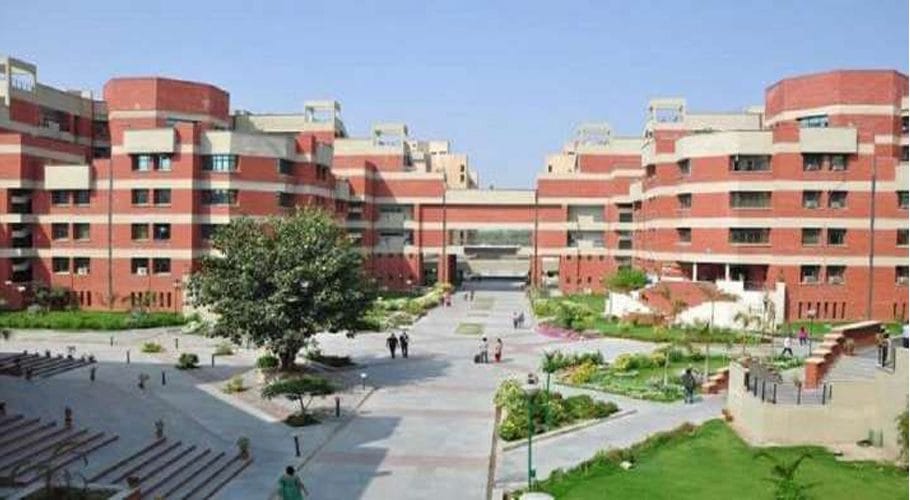In his Independence Day speech this year, Prime Minister Narendra Modi announced the government’s plan to launch a Dolphin Project. The proposed project aims to save marine and river dolphins.
What will the Dolphin project do?
Modi said in his speech that Project Dolphin will be in line with Project Tiger, which has helped increase the tiger population. Such an initiative was approved in principle in December last year, at the first meeting of the Ganges National Council (NGC), chaired by the Prime Minister.
“There is a need to conduct a special conservation program for the Ganges dolphin, which is a national aquatic animal and also a Ganges indicator species spread over several states,”
said the meeting minutes.
- So far, the National Mission for a Clean Ganges (NMCG), which implements the government’s flagship program, Namami Gange, has taken initiatives to save the dolphins. From now on, the Dolphin project is expected to be implemented by the Ministry of Environment, Forests and Climate Change.
What is the Ganges dolphin?
- The Ganges river system is home to a wide variety of aquatic life, including the Ganges dolphin (Platanista gangetica).
- The Ganges dolphin is one of the five species of river dolphins found in the world.
- It is mainly found in the Indian subcontinent, particularly in the Ganga-Brahmaputra-Meghna and Karnaphuli-Sangu river systems.
- The Ganges Dolphin Conservation Action Plan 2010-2020 describes male dolphins between 2 and 2.2 meters in length and females just over 2.4-2.6 m.
- An adult dolphin could weigh between 70 kg and 90 kg. The Ganges dolphins’ breeding season runs from January to June.
- They feed on various species of fish, invertebrates, etc.
Why is it important to save dolphins?
- There was a time when the Ganges dolphins could be seen in various places, from its delta in the Bay of Bengal to upstream in the foothills of the Himalayas.
- It has also been found in the tributaries of the Ganges.
- Some experts have reported that during the 19th century dolphins were seen in the Yamuna as far as Delhi.
- However, the construction of dams and dams and the increase in pollution have led to a decrease in the population of aquatic animals in rivers in general and dolphins in particular.
- Aquatic life is an indicator of the health of river ecosystems. The Ganges dolphin being at the top of the food chain, the protection of the species and its habitat will ensure the conservation of the aquatic life of the river.
Have other governments used aquatic life as an indicator of the health of a hydrographic system?
- All over the world there have been such examples. For example, the Rhine Action Plan (1987) of the International Commission for the Protection of the Rhine (ICRP), representing Germany, Switzerland, France, Luxembourg and the Netherlands, recovered salmon.
- The return of migrating fish is considered an indicator of improving river health. Salmon used to migrate from the North Sea to the Rhine every year and spawn, but this stopped when pollution in the river increased.
- After a chemical accident in 1986 which caused the death of fish and microorganisms, the action plan was launched.
- This led to an improvement in the water quality of the river and the salmon started to return.
“While salmon were considered lost in the Rhine in 1958, today several hundred salmon from the North Sea return each year to accessible tributaries of the Rhine and reproduce naturally there”,
states Assessment Rhine 2020 and the ICPR report.
How many Ganges dolphins are left?
Although no exact tally is available, various estimates suggest that the Ganges dolphin population in India could be around 2,500 to 3,000. However, the Minister of State for Environment, Forests and Climate Change, Babul Supriyo, had told Lok Sabha last year that there were around 1,272 dolphins in Uttar Pradesh and 962 in Assam. Increased pollution in the Ganges has reduced the number over the years.
What has been done so far to save the Ganges dolphins?
Although efforts to save them began in the mid-1980s, estimates suggest the numbers have not increased as a result. The Ganges dolphin continues to be listed as endangered by the International Union for the Conservation of Nature.
WILDLIFE ACT PROTECTION
After the launch of Ganga Action Plan in 1985, the government on November 24, 1986 included Gangetic dolphins in the First Schedule of the Indian Wildlife (Protection), Act 1972. This was aimed at checking hunting and providing conservation facilities such as wildlife sanctuaries. For instance, Vikramshila Ganges Dolphin Sanctuary was established in Bihar under this Act.
CONSERVATION PLAN
The government also prepared The Conservation Action Plan for the Ganges River Dolphin 2010-2020, which “identified threats to Gangetic Dolphins and impact of river traffic, irrigation canals and depletion of prey-base on Dolphins populations”.
NATIONAL AQUATIC ANIMAL
On October 5, 2009, the then Prime Minister Manmohan singh while chairing the maiden meeting of the National Ganga River Basin Authority, declared the Gangetic river dolphin as the national aquatic animal. A notification was issued by the Ministry of Environment and Forests the following year. Now, the National Mission for Clean Ganga celebrates October 5 as National Ganga River Dolphin Day.










More Stories
Orissa High Court Criticizes OPSC for Flawed Evaluation in Judicial Exam
MAH CET Registration 2025: Extended Deadline and Key Details
CUET PG 2025 Registration Extended: Apply Before February 8